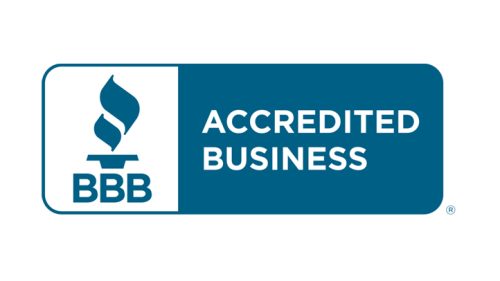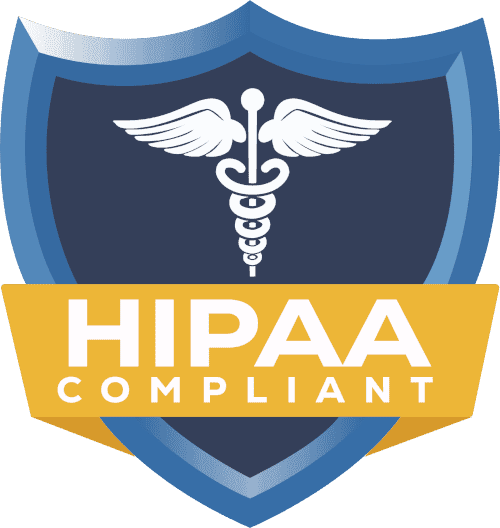Payer Enrollment vs. Credentialing: Understanding the Critical Differences

Introduction
The healthcare insurance environment is not easy to navigate for physicians, specialists, and practice managers. As a solo provider, group practice, or hospital administrator, it is important to know how insurance works in order to make your practice successful. Payer enrollment and credentialing are two very crucial steps in the process.
At Credex Healthcare, we assist healthcare professionals to become credentialed and enrolled with insurance payers to begin seeing patients and receiving them within a short time. Payer enrollment and credentialing are not interchangeable, but many people use them interchangeably. Delays, loss of revenue, and compliance risks can occur as a result of confusing them.
This guide will deal with a breakdown of what each of these processes entails, how they differ, and demonstrate how professional services can make both processes easier.
Why Both Payer Enrollment and Credentialing Matter
To any provider, there is no choice but to join insurance networks. In the absence of adequate enrollment and credentialing:
- Bill insurance visits by patients are not possible.
- You can have a risk of failing to comply with the payer requirements.
- Your practice might have revenue delays and denials of claims.
Knowledge of the distinction will guarantee unhindered operations, quicker approvals, and improved financial performance.
Common Confusion Between the Two
Such a misunderstanding is common among many providers; they believe that credentialing incorporates payer enrollment or the other way round. This is a myth that results in incomplete applications, documentation, and even rejection of claims.
Think of it this way:
- Credentialing checks your qualifications and makes sure that you comply with payer standards.
- Payer enrollment officially enrolls you into a payer network to enable you to make claims.
- They are both important and have diverse functions.
What is Credentialing?
Definition & Purpose
Credentialing refers to the process of establishing the education, licensure, training, and experience of a provider by insurance companies, hospitals, and other healthcare organizations. Its primary reason is to make healthcare providers competent and legally permitted to offer medical services.
In the absence of appropriate credentialing, not even the payers will know you are an authorized provider, and insurance claims will be refused.
Documentation and Verification Process
Credentialing is cumbersome and paperwork-based. Typically, providers need:
- State licenses and renewals
- Board certifications (where necessary)
- DEA registration (prescription of medications)
- Training records and education.
- Work history and references
- Malpractice insurance information.
- CAQH profiles (with numerous payers)
Insurance companies keenly check all documents. Any form of mismatch or absence of information can slow the credentialing process.
What is Payer Enrollment?
Definition & Purpose
Payer enrollment refers to the procedure of officially registering a provider with an insurance company, whereby they can present claims and get reimbursed by the insurance company for the services they provide.
Think of payer enrollment as the administrative process that links you with the network of the payer after checking your qualifications.
Insurance Panel Contracts and Approvals
At payer enrollment, providers:
- Enter into contracts with insurance firms.
- Assign a provider ID or payer number.
- Establish electronic submission of claims.
- Review reimbursement rates and coverage arrangements.
Without enrolling, you could be credentialed and not bill insurance-wise and have patients who are paying out of pocket.
Key Differences Between Payer Enrollment & Credentialing
Credentialing and payer enrollment are not similar; however, they play equally significant roles in the workflow of a healthcare provider.
Credentialing is mostly concerned with the qualification and compliance of a provider. This involves verification of education, licensure, certifications, and professional experience. The idea is to make sure that the healthcare providers qualify by meeting the requirements of the insurance companies and healthcare organizations. Upon the completion of credentialing, a provider will obtain a credential status to confirm that he or she has the capacity and freedom to provide medical services.
Depending on the payer, it may take anywhere between 60 and 120 days, and the documentation required includes state licenses, board certifications, CAQH profiles, work history, malpractice insurance information, and references.
Payer enrollment, on the other hand, is the administrative process that officially enrolls a provider with an insurance company. It enables the provider to file claims and be reimbursed for the services that they offer. Payer enrollment is concerned with insurance panel agreements, network involvement, and billing arrangements. The result of this process is being assigned a payer ID or network participation status, such that providers can officially bill the payer. It usually requires 15 to 60 days to be enrolled after credentialing has been done. Documentation that is necessary is verification of credentialing, insurance contracts, and tax forms.
Credentialing confirms that a provider is qualified, whereas payer enrollment confirms official recognition of the provider who can participate in the payer network. Credentialing is required of all healthcare providers, whereas payer enrollment is required for those planning to bill insurance. This difference is extremely important in order to prevent delays, denial of claims, and compliance problems.
Real-World Examples
- A new doctor undergoes credentialing by Medicare and Medicaid and does not submit payer enrollment. They are known as eligible but not able to charge insurance.
- A clinic has signed a contract with a commercial insurer but has not been credentialed. Applications are denied since qualifications are not checked.
These are the reasons why both steps are necessary.
Why Both Are Critical for Providers
Compliance and Reimbursement Impact
The insurance firms are very strict. Lack of either credentialing or enrollment may result in:
- Slow reimbursement of the claim.
- Denied claims
- Legal or compliance issues
- Reduced patient access
Risks of Incomplete Enrollment or Credentialing
Unfinished processes may lead to:
- Loss of revenue
- Increased administrative load.
- Poor provider-payer relationships.
At Credex Healthcare, we ensure that the providers do not fall for these traps, as we handle the two processes correctly and efficiently.
How Professional Services Simplify the Process
Role of Credentialing & Payer Enrollment Companies
Credex Healthcare is one of the companies that deal in provider credentialing and payer enrollment. Our team:
- Manages the collection and validation of documents.
- Maintains CAQH profiles
- Sends applications to various payers.
- Tracks application status
- Addresses payer inquiries within a short time.
Faster Approvals and Fewer Denials
The providers enjoy the advantages of:
- Efficient paperwork: All the required forms and licenses are gathered appropriately.
- Effective follow-ups: Our team makes direct contact with payers.
- Fewer delays: We monitor the progress of applications to get them approved on time.
- Compliance verification: Your practice is not paying any additional attention to meet all the payer requirements.
Choosing Credex Healthcare for Credentialing and Payer Enrollment
Credex Healthcare is a reliable ally in the providers of the United States. We specialize in:
- Enrollment of Medicare, Medicaid, and commercial payers.
- Credentialing of providers of solo and group practice.
- CAQH profile management and license verification.
- Reduced time and error.
Our solution fits every practice so that the physicians and clinics can invest time in taking care of patients rather than writing paperwork.
Conclusion
Credentialing and payer enrollment are two very important steps towards the financial and operational success of a provider. Credentialing confirms that you are qualified, and payer enrollment enables you to charge insurance and participate in payer networks. Loss of revenue, disqualified claims, and compliance risk could be a result of skipping or confusing both.
The collaboration with such a professional service as Credex Healthcare can guarantee an efficient process that can be approved quicker and with fewer errors. Regardless of whether you are a solo provider, group practice, or a hospital, adequate credentialing and enrollment will assist you in:
- Adhere to payer requirements.
- Maximize reimbursements
- Avoid administrative delays.
- Focus on providing quality care to patients.
Make the first move today and leave the payer enrollment and credentialing to Credex Healthcare, and you will be able to focus on the things that matter most to all your patients.
FAQs
1. What is the distinction between payer enrollment and credentialing?
Credentialing is a means of confirming eligibility, and payer enrollment is a method of getting you registered with an insurance company to allow you to be able to make claims.
2. Payers enrollment versus credentialing: How long does each process take?
Credentialing typically requires 60 to 120 days, and payer enrollment requires 15 to 60 days following credentialing approval.
3. Is it feasible to practice without payer enrollment?
Yes, however, they will not be able to cover insurance and will have to receive money out-of-pocket payments.
4. Are credentialing requirements in all insurance companies?
The majority of commercial payers, Medicare, and Medicaid insist on credentialing before any claim is accepted.
5. What are the advantages of payer enrollment outsourcing?
Outsourcing saves time, is accurate, decreases denials, expedites approvals, and enables the providers to concentrate on patient care.



















